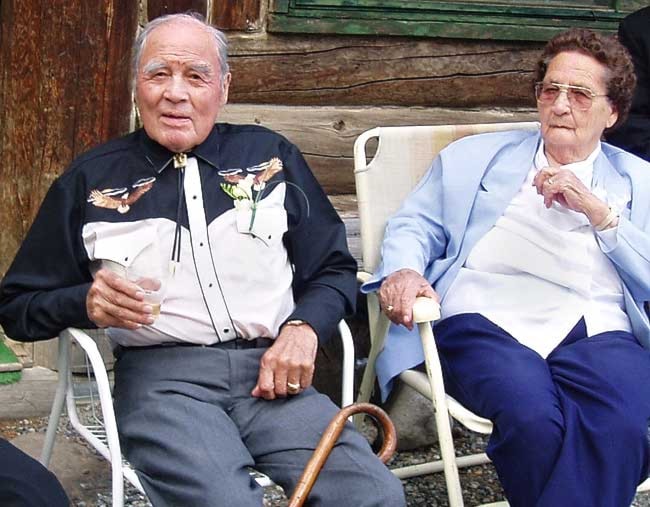Sue Van Bibber was a professor of the land.
“She had a PhD behind her name and her university was out there in the bush, on the land, on the water,” said Champagne/Aishihik Chief James Allen.
On the last day of February, the Champagne/Aishihik elder died.
Van Bibber had just turned 99.
“Any time we lose an elder that is that old, it’s a big loss to the community,” said Allen.
“It’s just like losing a professor of our traditional knowledge.”
Van Bibber was born on Wolverine Creek and was raised in the bush, said Dave Dickson, nephew and fellow outfitter.
Like any outfitting child, she would have been riding horses by the time she was three or four years old, and wrangling for her dad by seven or eight. In her early teens, Van Bibber would have started guiding, said Dickson.
It’s something she would continue for most of her life.
Van Bibber ran one of the first outfitting companies in the area with her husband Alex, who’s 95 and still out on the land trapping.
“She was the boss out there,” said Dickson.
“She was the queen bee.
“I never ever heard anybody ever say anything mean to her or raise their voice to her. She was the boss, boy, and just a sweet, nice person. I never ever heard her say a bad word about anybody or talk bad about anybody, but if something needed to be done she just hollered at somebody and someone scurried over there and did it.”
The life of an outfitter is not an easy one, he said.
Dickson, like Van Bibber, has been outfitting and guiding all his life, taking over the land from his father Richard Dickson - Van Bibber’s only surviving brother of 13 siblings.
“She was an extremely skilled bush woman, as good as anybody out there” said Dickson, listing the daily chores and activities for a guide, which start in the wee hours of the morning and carry on until the same time the next day - only to start all over again.
“And at that time, she would have been doing 14-day hunts,” he said.
That’s a big difference from the 60-day hunts her grandfather would have done.
Nowadays, hunts can range from an afternoon to a week.
“She was a remarkable woman,” said Dickson. “They just don’t make ‘em like that anymore.”
Van Bibber’s life on the land provided a wealth of knowledge about wildlife, traditional foods, local trails and what to expect from different parts of the land at different times of the year, said Allen, who believes her lifestyle of traditional foods and high activity on the land is what gave her such a long life.
“Her teaching has extended over more than one or two generations. It’s spread out within the whole First Nation,” he said.
“The way she did her traditional activities - whether it was setting a fish net under the ice or hunting in the hills with horses - all of those skills were passed on to her kids and they, in turn, were passed on to their family members. She was instrumental.”
Van Bibber had 10 children, and all her grandchildren, great-grandchildren and great-great-grandchildren combined total 145.
As the matriarch, she kept her family together, said Allen.
“Any time there was a family dispute or if the family wanted advice, they would always go to Sue,” he said. “They sought her council and she would give the directions.”
And it was some of Van Bibber’s children, like Dorothy Wabisca, who were instrumental in forming the Champagne/Aishihik First Nations’ self-government, said Allen.
Today, some of Van Bibber’s children still work within the First Nations. One daughter, Kathy, is a councillor.
“She was 99 years old,” said Allen.
“She lived a long time and lived a full life.”
Contact Roxanne Stasyszyn at
roxannes@yukon-news.com
